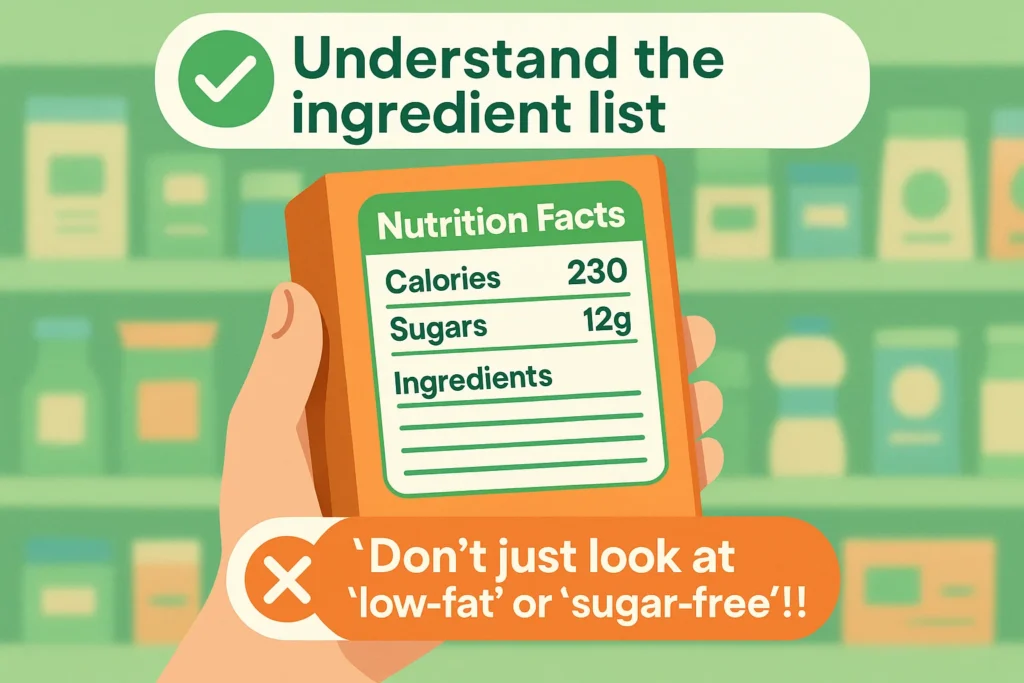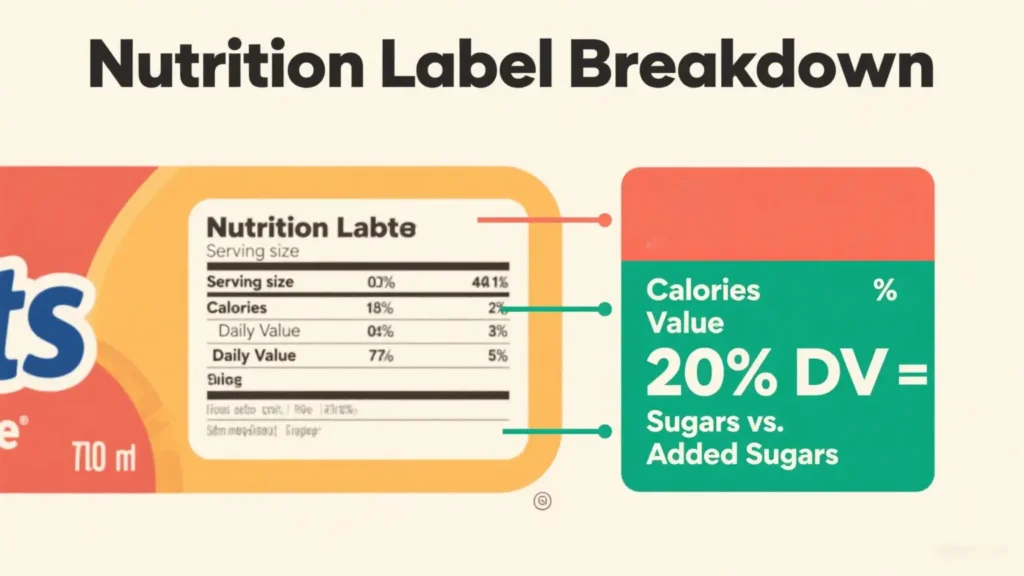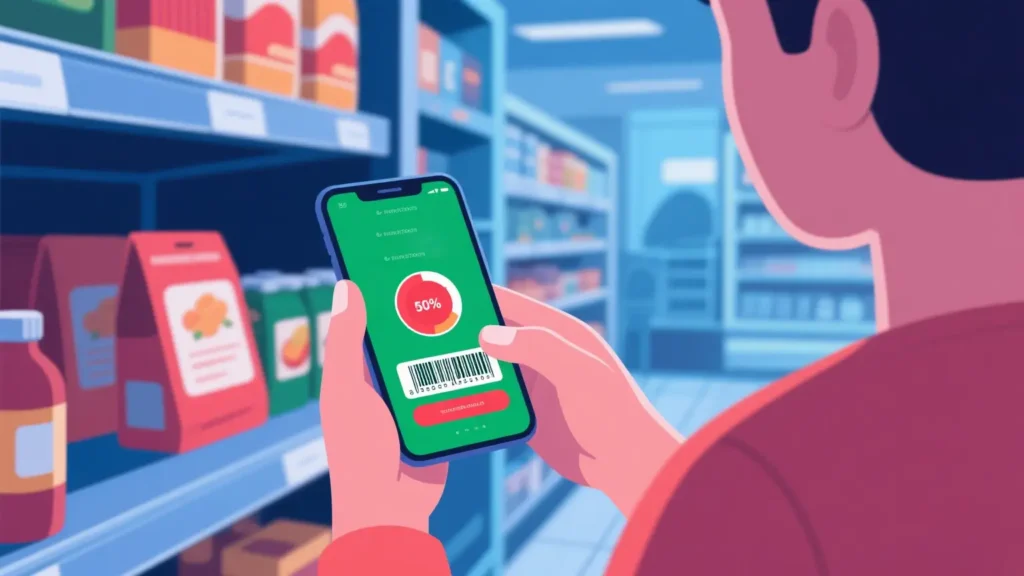As you walk into any grocery store, you will be met with an overwhelming sea of products. Words like “natural,” “low-fat,” “organic,” and “superfood” will feel as if they are literally jumping off the shelves. It is as if you are promised health and wellness in a shiny wrapper with every package. But do these claims still stand after turning the box around?
What really matters nowadays is to know what your food consists of. Given the rise of obesity, chronic diseases, and false advertising in the sector, being able to read and understand food labels accurately can significantly impact your day-to-day nutrition and overall health. By following these directions, you can be confident in your ability to read food labels like an expert, which will help you to avoid marketing gimmicks and make the right food choices.

What’s on a Nutrition Label — And What It Really Means
In the majority of countries, including the United States, food packaging is required by law to have a standard nutrition facts panel. Might initially seem a piece of cake, but there are plenty of traps that even the most experienced shoppers can fall into.
Serving Size vs. Servings Per Container
Understand that one of the most deceiving parts of food labeling is the serving size. If a bag of chips is labeled as 150 calories per serving, it may look right to you. Even if the bag contains three servings and you consume all of them (it is easy to), you have actually taken in 450 calories. Always look for both the serving size and the number of servings per container, to really grasp the nutritional side of the story.
Calories
Calories are the raw energy in total you gain from food. In most cases, the number of calories is the very first thing that comes to mind of humans when they have the desire to lose or control their weight. But the numbers of calories contain alone cannot tell you anything about the wholesomeness of food because calories have got to be seen in relation to other nutrients like protein, fiber, and fat.
Macronutrients: Fat, Carbohydrates, and Protein
- Total Fat: Includes the sum of saturated fats and trans fats. Trans fats should be avoided altogether while the intake of saturated fats should be kept within limits.
- Carbohydrates: Includes, of course, total carbohydrates as well as those from fiber and sugars. It is generally true that foods with much fiber are healthy, whereas those with much sugar are largely unhealthy.
- Protein: Becomes a source of muscle repair and maintains satiety. Also, an indicator of the food’s filling capacity.
% Daily Value (DV)
This tells you the percentage of the nutrient in a serving that contributes to your daily diet if your diet is based on 2,000 calories a day.
- 5% or less is considered low
- 20% or more is considered high
This feature allows you to compare products and find out the foods that are rich in nutrients.
Ingredients List: Your First Red Flag Scanner
Nutrition facts show you numbers, while the ingredients list narrates the story behind the numbers.
Ingredient Order Matters
The list of ingredients is done in descending order according to the quantity. The occurrence of sugar in the first place indicates that there is more sugar in the product than in any other ingredient. Try to buy the products in which the initial ingredients are whole foods i.e. like oatmeal, nuts, or fruits.
Hidden Sugars
Food manufacturers have many tricks to hide the sugar in your food:
- Dextrose
- Maltose
- High-fructose corn syrup
- Cane juice
- Agave nectar
Be wary when the first five ingredients contain multiple types of sugar, as it is a signal that you should be cautious of the product.
Artificial Additives and Preservatives
Beware of ingredients such as:
- MSG (monosodium glutamate)
- Sodium nitrite
- Artificial dyes (like Red 40 or Yellow 5)
- BHA/BHT
In some cases, sensitive people can indicate allergies or health problems after consuming this type of foodstuff.
Top Label Lies: Marketing Phrases That Mislead You
Many food companies are more interested in the advertisement of the product rather than the product itself. Knowing how to detect misleading food packaging is a big part of understanding food labels like a pro.

“All Natural” Doesn’t Mean Healthy
There is no stipulated regulation for “all-natural” without the use of the word “organic”. A product can have natural flavors but still be loaded with sugar, salt, and preservatives.
“No Sugar Added” vs. “Sugar-Free”
- No sugar added simply means no sugar was added during processing — it can still contain natural sugars like those in fruit.
- Sugar-free means less than 0.5 grams of sugar per serving.
“Light,” “Low-Fat,” and “Reduced”
These words could have double meanings, be confusing, or lead to wrong judgments:
- Light: It may describe the flavor or texture of the food, which in no way imply that it is low in fat or low in calories.
- Low-fat: It generally has less than 3g of fat per serving but it’s still possible that there is more sugar in it.
- Reduced: This means that the product now has at least 25% less of a nutrient than the regular one, not that it is healthy for sure though.
Pro Tips to Read Labels Faster at the Grocery Store
After you have grasped the art of label reading, the next thing will be doing it effectively which is the next step. Here are the tips from the experts that will make the whole process quite a breeze:
Don’t Shop Hungry
Researchers have found that you are more likely to pick up high-calorie food when you are hungry. So, it’s always a good idea to have a healthy meal before you go shopping.
Use Food Scanning Apps
One of the benefits of using apps such as Yuka, Fooducate, and MyFitnessPal is that you can easily scan the barcode of the food and get a quick nutrient and ingredient evaluation.
Set Personal Nutrition Goals
Be aware of your limits:
- Max sugar: < 25g per day (women), < 36g (men)
- Sodium: < 2,300mg per day
- Fiber: > 25g per day
Thus, you make sure you find the right product that matches your health aspirations.
The Importance of Reading Labels for Specific Lifestyles
Not all the diets are the same and the skill of chart-reading is irreplaceable for the people with special dietary restrictions.

Keto Diet
The
- Net carbs (total carbs – fiber)
Healthy fats:
- Avocado oil, MCT oil
Low-Sodium Diet
Beware of:
- Salt contents more than 400mg per serving
- Products like deli meats and soups that have been processed
Vegan/Vegetarian Diet
Traps to be aware of:
- Animal-derived additives such as gelatin, casein, and rennet
- If you don’t know whether the product is vegan or not, look for “vegan certified” labels
The Impact of Food Labeling on Consumer Choices (And Why It’s a Good Thing)
Regulations on food labeling are continuously evolving over time, and keeping in line with the current updates can aid in making more informed decisions.
Bigger Font Sizes of Calories and Serving Size
The FDA has mandated the usage of a heavier font for these values to make them stand out more.
Listing of Added Sugars Should Be Clearer
The new rule clarifies the source of the sugars consumed, considering a natural sugar such as fruit and added sugar, which is more harmful when taken in excess.
Front-Of-The-Package Labeling’s New Approach
In many U.S. as well as in Europe brands, before the pack labels have resorted to color coding. Green means ‘eat it up’ and red means that it’s not nutritionally acceptable, yellow is in the caution zone.
Summing Up: Who Recognizes the Pro Label Reader?
Consuming information on the food label can already be considered, provided you are observant, know what you are looking for, and do it regularly. Here are the main points from this article:
- Match serving sizes with realistic measurements
- Find the top three ingredients to get an idea of the quality it represents
- Identify hidden sugars and look out for misleading marketing messages
Utilize daily value percentages as a reference for the intake of nutrients.
Change as per your own personal diet objectives
If you’re looking to drop a few pounds, decrease body fat, gain muscles, reverse diabetes, or just consume whole and real food, then an expert in reading food labels is what you need to optimally manage your health and nutrition now. This is a bull’s eye – read on for the best shopping experience each time you stop by the grocery store.